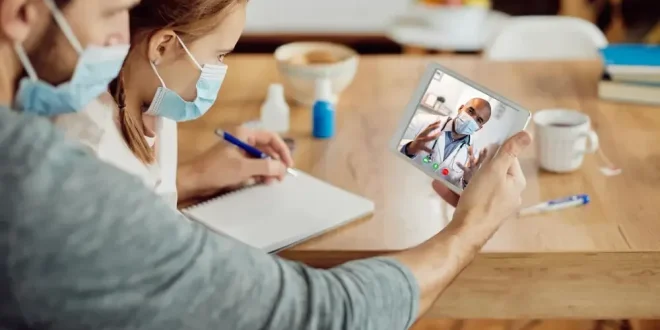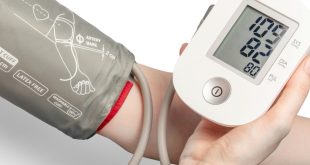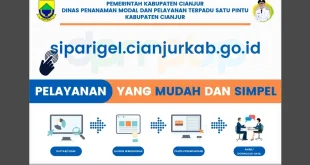Outline of the Article:
Telemedicine vs. Kunjungan Langsung: Mana yang Lebih Efektif?
Introduction
- Explanation of telemedicine and kunjungan langsung (in-person visits)
- Relevance of the topic in the current healthcare landscape
What is Telemedicine?
- Definition and brief history
- Types of telemedicine (video consultations, remote monitoring, mobile health apps)
What is Kunjungan Langsung (In-Person Visit)?
- Definition and typical process
- Common scenarios where in-person visits are preferred
Advantages of Telemedicine
- Convenience and accessibility
- Time and cost-saving benefits
- Ability to reach remote areas
- Reducing the burden on healthcare facilities
Telemedicine for Chronic Disease Management
- Role of telemedicine in monitoring long-term health conditions
- Benefits for both patients and healthcare providers
Advantages of Kunjungan Langsung
- Direct physical examination and diagnostics
- Building patient-doctor trust and rapport
- Situations where physical presence is essential (e.g., emergency care, physical therapy)
Personal Touch in Healthcare
- Psychological benefits of in-person consultations
- Importance of face-to-face interaction in some cultures
Challenges of Telemedicine
- Technological barriers (access to devices, internet issues)
- Limited physical examinations
- Legal and regulatory concerns
- Security and privacy risks
Technological Access and Digital Divide
- Impact of technology on accessibility for different demographics
- Addressing the digital divide in remote areas
Challenges of Kunjungan Langsung
- Time and logistical constraints
- Cost of travel and inconvenience
- Overcrowding in healthcare facilities
Limited Time with Doctors
- Long waiting times for appointments
- The rushed nature of in-person visits
When to Choose Telemedicine Over Kunjungan Langsung?
- Situations where telemedicine is most beneficial
- Types of conditions that can be treated remotely
- Examples of successful telemedicine use cases
Ideal Scenarios for Telemedicine
- Routine consultations and follow-ups
- Mental health therapy
- Minor illnesses and preventive care
When to Choose Kunjungan Langsung Over Telemedicine?
- Scenarios that require in-person consultations
- Importance of physical examinations and urgent care
- The role of telemedicine limitations
Emergency and Complex Cases
- Why some conditions demand in-person attention
- Handling emergencies in healthcare
Telemedicine and Kunjungan Langsung in the Post-Pandemic World
- How COVID-19 has changed healthcare delivery
- The hybrid model: Combining telemedicine and in-person visits
- Future trends in healthcare delivery
Conclusion
- Summary of the key points
- Final thoughts on balancing both methods for effective healthcare delivery
FAQs
- Is telemedicine safe for all types of medical consultations?
- How does telemedicine help with mental health treatment?
- Can telemedicine replace in-person visits entirely?
- Are there any specific medical conditions that should always be treated in person?
- What are the key challenges that telemedicine needs to overcome?
Telemedicine vs. Kunjungan Langsung: Mana yang Lebih Efektif?
Introduction
The healthcare landscape has dramatically evolved in recent years, with technological advancements changing the way medical services are delivered. Two of the most common ways for patients to access healthcare are through telemedicine and kunjungan langsung (in-person visits). Both have their unique benefits and drawbacks, making it essential to understand which is more effective depending on the situation.
With the rise of digital technologies and the COVID-19 pandemic, telemedicine became a game-changer for patients who needed healthcare services but could not visit medical facilities in person. On the other hand, kunjungan langsung has been the traditional mode of healthcare delivery, with its own set of advantages that telemedicine cannot always replicate.
In this article, we will compare telemedicine and kunjungan langsung to determine which is more effective in various scenarios. We’ll explore the advantages, challenges, and contexts in which each method excels.
What is Telemedicine?
Telemedicine refers to the practice of delivering healthcare services remotely using technology. It allows patients and healthcare providers to interact via digital platforms, such as video calls, phone consultations, or remote monitoring tools. While the concept of telemedicine is not new, its widespread adoption accelerated during the COVID-19 pandemic, when healthcare systems around the world faced overwhelming demand.
Telemedicine encompasses several types of healthcare delivery:
- Video consultations: Patients can meet with doctors or specialists via video conferencing, mimicking an in-person consultation.
- Remote patient monitoring (RPM): This includes using wearable devices that monitor vital signs such as blood pressure, glucose levels, or heart rate.
- Mobile health apps (mHealth): Patients can use apps to track their health data, receive reminders for medications, and consult with doctors.
The primary appeal of telemedicine lies in its convenience and accessibility. It breaks down barriers for patients in remote areas, reduces the need for physical travel, and allows for continuous care, particularly for chronic conditions.
What is Kunjungan Langsung (In-Person Visit)?
A kunjungan langsung or in-person visit involves a patient physically visiting a healthcare facility (hospital, clinic, etc.) to consult with a doctor, receive treatment, or undergo diagnostic procedures. This method has been the cornerstone of medical care for centuries and is still widely used today.
In-person visits allow for direct interaction between patients and healthcare professionals, facilitating comprehensive assessments that are often impossible to achieve remotely. These visits are essential when a hands-on physical examination is necessary to diagnose certain conditions. For example, conditions that involve physical injury, such as fractures or wounds, require a doctor to be physically present to examine and treat the patient.
In-person visits are still crucial in cases of emergency, complex medical conditions, and situations where telemedicine cannot provide a full picture of the patient’s health.
Advantages of Telemedicine
Convenience and Accessibility
One of the most significant advantages of telemedicine is its convenience. Patients can access healthcare services from the comfort of their homes, eliminating the need for travel or waiting in long queues at clinics. This is especially beneficial for people in remote areas or those with limited access to healthcare facilities. The ease of setting up virtual consultations also saves patients time, allowing them to get medical advice without disrupting their daily schedules.
Time and Cost-Saving Benefits
Telemedicine can significantly reduce the time and cost associated with healthcare visits. In-person consultations often require patients to spend time traveling to a healthcare facility, waiting for their turn, and then traveling back. With telemedicine, these steps are eliminated. This is especially advantageous for those with busy schedules, the elderly, or those who live far from medical facilities.
In addition to saving time, telemedicine can be more affordable. Virtual consultations often cost less than in-person visits, and patients do not have to worry about travel expenses, especially in rural areas.
Ability to Reach Remote Areas
Telemedicine is an excellent tool for providing healthcare in underserved areas. People living in rural or remote locations often face challenges in accessing medical care due to geographic barriers. Telemedicine enables healthcare providers to reach these individuals without requiring them to travel long distances. This is particularly important for people who need regular follow-ups or those with limited mobility.
Reducing the Burden on Healthcare Facilities
Telemedicine can help ease the burden on physical healthcare facilities. By managing routine consultations and follow-ups remotely, hospitals and clinics can focus on more urgent or complex cases. This allows healthcare systems to be more efficient, especially during times of crisis, such as the COVID-19 pandemic, when healthcare facilities were overwhelmed.
Telemedicine for Chronic Disease Management
Chronic disease management is another area where telemedicine shines. Conditions like diabetes, hypertension, and asthma require regular monitoring and frequent check-ups. Telemedicine allows healthcare providers to monitor patients remotely through wearable devices and mobile apps that track vital signs. Patients can send their health data directly to their healthcare provider, who can make adjustments to their treatment plans without the need for a physical visit.
This remote monitoring is highly beneficial for patients, as it enables them to manage their condition from home. It also provides healthcare providers with continuous data, allowing for timely interventions before conditions worsen. This is particularly valuable in managing diseases where small changes in health can lead to significant complications.
Advantages of Kunjungan Langsung
While telemedicine is gaining popularity, there are several unique benefits to kunjungan langsung or in-person visits that cannot be fully replicated through digital means. These advantages often make in-person consultations necessary, particularly for certain medical conditions and situations.
Direct Physical Examination and Diagnostics
In-person visits allow doctors to conduct a full physical examination, which can be crucial for accurate diagnosis and treatment. Telemedicine, while effective for some conditions, has limitations when it comes to physical exams. Many conditions require tactile examination (such as feeling for lumps, measuring reflexes, or palpating the abdomen) that telemedicine simply cannot provide. For example, a doctor diagnosing a patient with a respiratory infection may need to listen to lung sounds with a stethoscope or perform a chest examination.
Moreover, certain diagnostic tools such as blood tests, x-rays, and other imaging tests are only available in-person. This is particularly important when the diagnosis involves conditions that are visible only through specialized equipment or a combination of tools that cannot be accessed remotely.
Building Patient-Doctor Trust and Rapport
Another key advantage of in-person visits is the opportunity for healthcare providers to build trust and rapport with their patients. Face-to-face interactions can foster a sense of security, which is especially important in healthcare. Patients often feel more comfortable asking questions and sharing sensitive information when they are physically present with their doctor. This personal connection can enhance communication, which is vital for a successful treatment outcome.
In many cultures, the idea of a doctor-patient relationship goes beyond just medical care; it’s about understanding, trust, and emotional support. This human touch, which is fundamental to building lasting relationships, cannot be fully replicated through a digital interface.
Situations Where Physical Presence is Essential
In-person visits are irreplaceable when urgent or severe conditions arise. Emergency situations, such as heart attacks, strokes, severe injuries, and accidents, require immediate, direct intervention from medical professionals. A doctor needs to assess the patient’s physical condition, perform immediate treatments, and take fast decisions that could save lives. Moreover, if the patient is experiencing pain or distress, face-to-face care can provide more effective support and care than what telemedicine could offer.
Additionally, for certain therapeutic procedures like physical therapy, surgeries, or other hands-on treatments, in-person care is necessary. For example, physical therapists cannot demonstrate specific exercises through telemedicine as effectively as they can in person. Likewise, some surgeries or invasive procedures simply cannot be performed remotely.
Challenges of Telemedicine
While telemedicine has made significant strides, it is not without its challenges. Below are some of the key obstacles that still limit its widespread effectiveness in certain contexts.
Technological Barriers
One of the primary challenges of telemedicine is technological access. For telemedicine to be effective, both patients and healthcare providers need access to the necessary technology—such as smartphones, computers, or tablets—and a stable internet connection. In remote or low-income areas, limited access to these resources can make telemedicine difficult or even impossible to implement.
In addition, not all patients are tech-savvy. Some individuals, especially older adults, may struggle to navigate online health platforms or use video conferencing tools. This creates a digital divide, where certain demographics cannot fully benefit from telemedicine, exacerbating healthcare inequalities.
Limited Physical Examinations
While telemedicine allows healthcare providers to perform consultations and monitor patient health remotely, it does not allow for thorough physical examinations. Physical exams are often critical in diagnosing many conditions. A doctor cannot feel a patient’s abdomen, check for physical signs of illness, or conduct reflex tests through a screen. This limits the ability to diagnose conditions that require hands-on assessments, such as musculoskeletal issues, skin conditions, or neurological disorders.
Legal and Regulatory Concerns
Telemedicine also faces several legal and regulatory hurdles. Different countries and regions have varying laws regarding telemedicine, including the licensing requirements for healthcare providers, reimbursement policies, and privacy protections. In some places, medical practitioners are not allowed to offer services to patients outside their jurisdiction unless they meet specific licensing criteria. These regulations can create challenges in ensuring telemedicine’s accessibility to everyone, particularly across state or national borders.
Security and Privacy Risks
As with any digital platform, telemedicine carries risks related to data security and patient privacy. Sensitive health data is often transmitted electronically, and healthcare providers must ensure that their platforms are secure. There is always the possibility of hacking, data breaches, or unauthorized access to personal health information, which is a significant concern for both patients and healthcare providers. While security measures are constantly improving, telemedicine still faces challenges in maintaining patient confidentiality.
Challenges of Kunjungan Langsung
While in-person visits are often seen as the traditional and effective way to receive medical care, they too come with several challenges that can make them less appealing for patients and healthcare providers alike.
Time and Logistical Constraints
For many patients, visiting a healthcare facility for an appointment can be time-consuming and inconvenient. Patients need to take time off work, arrange transportation, and sometimes wait for long periods before they can see a doctor. In areas with crowded healthcare facilities, long waiting times are common, which can delay diagnoses and treatments. This logistical burden can be particularly problematic for elderly patients or those with mobility issues.
For healthcare providers, managing the schedule of in-person visits can be stressful and inefficient, especially in busy practices. There is often a rush to see as many patients as possible, which can lead to shorter consultations, and may ultimately affect the quality of care delivered.
Cost of Travel and Inconvenience
In addition to the time and logistical burdens, in-person visits can also be costly. Patients who live far from healthcare facilities face travel expenses, including transport costs, and sometimes even the need to stay overnight if their appointments are far away. For those without access to affordable transportation or who are living in rural areas, this can be a significant obstacle.
Moreover, the need to take time off work for medical appointments can result in lost wages for many individuals, further increasing the financial burden. This can make healthcare unaffordable for some, particularly in countries where healthcare insurance is limited or non-existent.
Overcrowding in Healthcare Facilities
Overcrowding is another major issue with in-person visits, especially in public healthcare systems. With limited resources, long lines, and overwhelmed staff, patients may not receive the timely care they need. This can lead to frustrations, missed appointments, and compromised healthcare outcomes. In some cases, the overcrowded system can also put healthcare workers at risk of burnout, impacting the overall quality of care.
Limited Time with Doctors
One of the most significant frustrations associated with kunjungan langsung (in-person visits) is the limited time that patients often get with their doctors. Due to the volume of patients healthcare professionals must see in a day, consultations are often brief, which can result in the doctor missing critical details or being unable to address all of the patient’s concerns. This time constraint can affect the quality of care, as it becomes difficult for the doctor to conduct a thorough assessment, answer all questions, or explain complex diagnoses fully.
Long waiting times can exacerbate this issue, leading to rushed consultations where the patient might feel unsatisfied or unheard. In cases where patients need to discuss multiple health concerns, this time pressure can be especially problematic. This is one area where telemedicine may offer a more patient-centered approach, as patients can often spend more time discussing their health without the same time constraints.
When to Choose Telemedicine Over Kunjungan Langsung?
While both telemedicine and kunjungan langsung have their unique benefits, there are certain situations where telemedicine is the better option. Knowing when to opt for remote healthcare can help ensure that the patient receives the appropriate care in the most efficient way.
Situations Where Telemedicine is Most Beneficial
Telemedicine is particularly useful for non-urgent, routine consultations, where a physical examination is not necessary. Conditions such as mild cold symptoms, medication refills, mental health support, and chronic disease management can often be effectively managed through virtual consultations.
For individuals who live in remote areas or have limited access to transportation, telemedicine can be a lifeline. It enables them to seek medical advice and care without the need to travel long distances, which can be especially important for elderly patients or those with chronic conditions that require frequent monitoring.
Types of Conditions That Can Be Treated Remotely
Some health conditions are well-suited to telemedicine. For instance, minor illnesses like cold, flu, or minor skin rashes can often be diagnosed through video consultations. Additionally, ongoing care for chronic conditions like diabetes, hypertension, or asthma can be effectively managed through regular telemedicine check-ins and remote monitoring devices.
Mental health conditions such as anxiety, depression, and counseling for other psychological issues are another area where telemedicine excels. Virtual therapy or counseling has been shown to be as effective as in-person sessions for many individuals, particularly for those who feel more comfortable in their home environment.
Examples of Successful Telemedicine Use Cases
Telemedicine has been successfully used in managing chronic diseases like diabetes, where patients are monitored remotely using wearable devices that send vital data (like blood sugar levels) to their healthcare provider. This enables timely adjustments to treatment plans, preventing complications. Another example is the use of telehealth in rural areas where specialized care is often hard to find. Patients can access expertise from specialists via video consultations, without needing to travel long distances.
When to Choose Kunjungan Langsung Over Telemedicine?
Despite the advantages of telemedicine, there are certain circumstances where kunjungan langsung (in-person visits) is the better choice. Some medical situations simply require a hands-on approach or the need for immediate intervention, which telemedicine cannot provide.
Situations That Require In-Person Consultations
In-person visits are essential for any situation where a physical examination or diagnostic procedure is required. For example, if a patient has an injury such as a broken bone, a doctor must physically assess the injury, conduct imaging tests (such as X-rays), and determine the necessary course of treatment. Similarly, conditions like heart attacks or strokes, where immediate physical intervention is required, can’t be effectively treated remotely.
Furthermore, patients who need specialized treatments like chemotherapy, physical therapy, or surgeries need to visit healthcare facilities in person. Telemedicine can support some of these processes in terms of follow-ups, but the core treatments require a physical presence.
Importance of Physical Examinations and Urgent Care
Certain medical conditions simply cannot be diagnosed or treated remotely, especially those that require in-depth physical examinations. For example, neurological conditions often require tests like reflex checks, motor skill assessments, and imaging scans that only in-person visits can provide.
Similarly, in cases of urgent care, where immediate and sometimes life-saving treatment is needed (e.g., appendicitis, major injuries, or acute infections), telemedicine cannot replace the hands-on care that a patient requires in a healthcare setting.
Role of Telemedicine Limitations
Telemedicine has limitations when it comes to diagnosing conditions that require nuanced, tactile exploration or real-time interventions. Even though remote consultations can be convenient for a range of non-critical issues, when conditions are complex or acute, the inability to physically assess the patient limits telemedicine’s effectiveness.
Telemedicine and Kunjungan Langsung in the Post-Pandemic World
The COVID-19 pandemic accelerated the adoption of telemedicine worldwide, transforming how healthcare is delivered. As we move into a post-pandemic world, the landscape of healthcare delivery is continuing to evolve, with both telemedicine and kunjungan langsung playing important roles.
How COVID-19 Has Changed Healthcare Delivery
During the pandemic, many healthcare systems had to quickly adapt to the rising demand for virtual healthcare. Restrictions on in-person visits, coupled with the risk of viral transmission, made telemedicine an essential tool. In many countries, health authorities relaxed regulations on telemedicine practices, allowing patients to receive healthcare remotely for the first time.
This has had long-term implications for the future of healthcare delivery, with telemedicine becoming more ingrained in daily healthcare practices. Many patients who were initially hesitant about using telemedicine now see its benefits and prefer the convenience it offers.
The Hybrid Model: Combining Telemedicine and In-Person Visits
The future of healthcare likely lies in a hybrid model that combines the best of both telemedicine and kunjungan langsung. Telemedicine can be used for routine check-ups, follow-up visits, and mental health consultations, while in-person visits can be reserved for more complex or urgent care needs. This approach offers patients the convenience of remote healthcare while still ensuring they have access to physical assessments when needed.
The hybrid model also helps reduce the strain on healthcare facilities, allowing them to prioritize patients who need immediate, hands-on care, while enabling others to receive care remotely.
Future Trends in Healthcare Delivery
Looking ahead, we can expect further integration of technology in healthcare, including advancements in artificial intelligence (AI) and machine learning. These technologies can improve diagnostic accuracy, making telemedicine even more effective in the future. Remote patient monitoring tools are also becoming more sophisticated, allowing healthcare providers to track a wider range of health metrics, which could revolutionize the management of chronic diseases.
Conclusion
In conclusion, both telemedicine and kunjungan langsung have their distinct advantages and limitations, and the choice between the two depends largely on the situation. For routine consultations, chronic disease management, and follow-ups, telemedicine offers an efficient, accessible, and cost-effective option. However, for complex conditions, emergencies, and physical examinations, kunjungan langsung remains essential.
The future of healthcare is likely to be a combination of both approaches, with telemedicine handling less critical cases and in-person visits reserved for more severe health concerns. Balancing these two methods will lead to a more effective and efficient healthcare system that meets the needs of patients while overcoming the challenges of traditional care.
FAQs
1. Is telemedicine safe for all types of medical consultations?
While telemedicine is generally safe, it may not be suitable for cases that require a physical examination, such as physical injuries, neurological issues, or emergencies. However, for non-urgent consultations and follow-ups, it provides a safe alternative.
2. How does telemedicine help with mental health treatment?
Telemedicine allows for virtual therapy sessions, which have been shown to be effective for many people suffering from mental health issues. Patients can talk to therapists or counselors from the comfort of their homes, offering privacy and convenience.
3. Can telemedicine replace in-person visits entirely?
Telemedicine cannot fully replace in-person visits, especially for emergency care, physical exams, and complex medical conditions. However, it is an excellent tool for managing chronic conditions, routine check-ups, and consultations that don’t require a physical examination.
4. Are there any specific medical conditions that should always be treated in person?
Conditions requiring immediate physical examination, complex surgeries, trauma care, or diagnostic imaging should be treated in person. Conditions like heart attacks, strokes, and major injuries necessitate hands-on care.
5. What are the key challenges that telemedicine needs to overcome?
Telemedicine faces challenges related to technological access, limited physical examination capabilities, security and privacy risks, and varying legal regulations. Addressing these challenges is essential to its broader adoption.
Just your feedback is enough for me! Please take a moment to leave a review.
Discover more by supporting me on Patreon / BuyMeACoffee
 Rugby Rumilly Portal Informasi Gadget dan Teknologi Terkini
Rugby Rumilly Portal Informasi Gadget dan Teknologi Terkini




